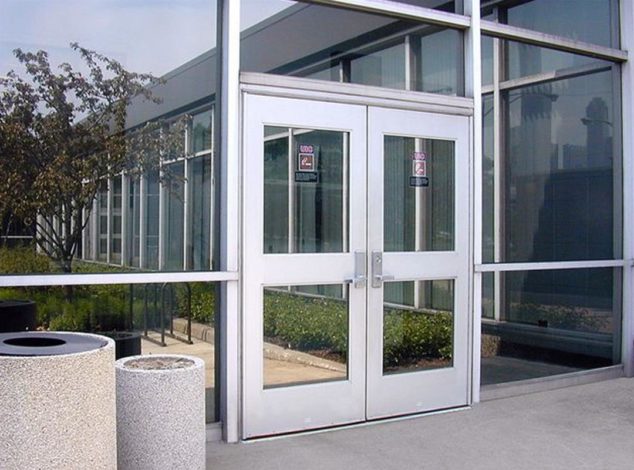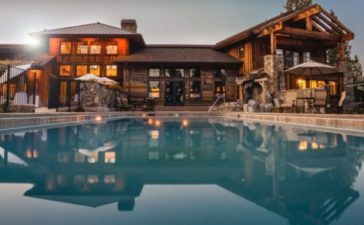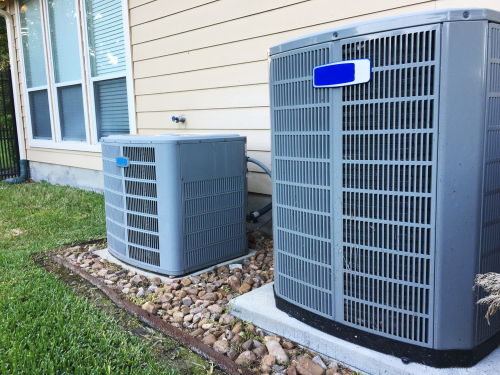Glass is not just a material that allows natural light to enter a specific area, but it also has different significant properties and functions. In the architecture industry, glass has been used extensively in different architectural designs. Its aesthetic, technical, and energy properties make its applications almost unlimited, from external glazing to interior decoration and industrial uses.
With the vast ranges, architects and other construction experts will find a material that gives shape to their creative inspiration while assuring comfort for the building occupants and actively protecting the environment. Most glass types are in different materials for architecture, especially for furniture that can significantly contribute to the room’s aesthetic appeal. One great example is the gypsum-glass fiber-reinforced panel, an access door composed of gypsum glass fiber that can blend seamlessly to its surroundings.
There are various types of glass with other appearances and properties, which you can use in multiple applications. Here we have given brief information on numerous types of glass and their application, which a homeowner must know before buying.
- Normal or Floating Glass
Manufacturers produce standard glass by combining all the glass ingredients. This process begins by heating the ingredients till molten and by cooling the mixture after. Float glasses are trendy in the construction of architectural exteriors and interiors of the building. It has wide application in residential structures.
Here are some different types of float glasses;
- Clear Glass- Clear glass usually has a natural greenish hue or color. You can use clear glasses for indoors, windows, solar applications, shelves, etc. Furthermore, you can also use this glass type for further processing of other glass types.
- Tinted Glass– This glass type is successfully done by melting colorants and adding tinting and solar-radiation absorption properties. This type of glass can save energy, reduce heat penetration into buildings, and give a striking visual effect to your facility.
- Textured Glass– This is a translucent and decorative glass with textures on one side of the mirror for scattering light and obstructing visibility from the outer area. Patterned glass helps provide privacy to the house’s interiors, thus extensively used in exterior windows and bathroom windows.
2. High-Performance Glass
High-Performance Glass refers to glazing that has performance capabilities rather than just its aesthetic qualities. Performance requirements may include impact resistance, heat gain, reflectivity, privacy, acoustic, fire rating, safety, or its ability to shed water spots and dirt accumulation. Here are the typical high-performance glasses available out on the market;
- Solar Control Glass- This glass type is a special oxide-coated glass that only transfers less amount of heat into the building and, in addition, helps in reducing the glare of light entering.
- Low-E glass– Low emissivity glass contains excellent thermal insulation properties. This product only allows visible light to enter the room, protecting UV and infrared rays that can potentially harm your occupant’s health. On the other hand, they help keep the interior’s temperature and provide energy-efficient solutions in cold climates.
3. Processed Glass
Controlled thermal or chemical treatments process this glass type to increase its strength compared with regular glass. Processed glass undergoes processes that create internal stresses, which contribute to the glass’ strength. The process will usually shatter the glass into small fragments instead of sharp pieces when broken, making it less likely to cause any or severe injuries.
Here are the different types of processed glass;
- Laminated glass- is also known as heatproof, soundproof, bulletproof, insulating, or safety glass. Its manufacturing process involves putting together a layer of polyvinyl butyl between two or more layers of glass. This material is suitable for skylight glazing and automobile windshields.
- Tempered Glass- is a substantial glass heated to a uniform temperature and rapidly cooled to increase its strength. It is stronger than the regular glass of equivalent thickness; hence it is used for safety and stability. Tempered glass is usually for commercial applications where wind, snow, or thermal loads are rampant.
- Reflective Glass– This glass imparts a mirror-like appearance and wide palettes of colors to the external area of the buildings under daytime situations. A layer of metal oxide is applied to one side of the clear or body-tinted glass to increase the amount of reflection by the glass. This type of glass is usually for office and high-rise building doors and windows for privacy purposes.
- Insulated Glass Unit– They provide excellent thermal and sound insulation properties. Insulated glass units are perfect for office buildings, hospitals, hotels, houses, buildings with high heating or cooling requirements, and structures that need temperature and humidity control. These include telephone exchanges, airport control towers, and other environments that need regulated atmosphere and prevention of condensation.
- Ceramic Printed Glass– Ceramic printed glass is essential to mask a part or whole glass for privacy or hide the background. It is for curtain walls, shower installations, glass doors, spandrels, partitions, stair rails, conference rooms, etc.
There are still more glass types that you can experiment with and discover. Make sure you consult the right persons involved when looking for the perfect glass type for your construction project that will help boost your building’s ambiance, aesthetic appeal, and efficiency.






